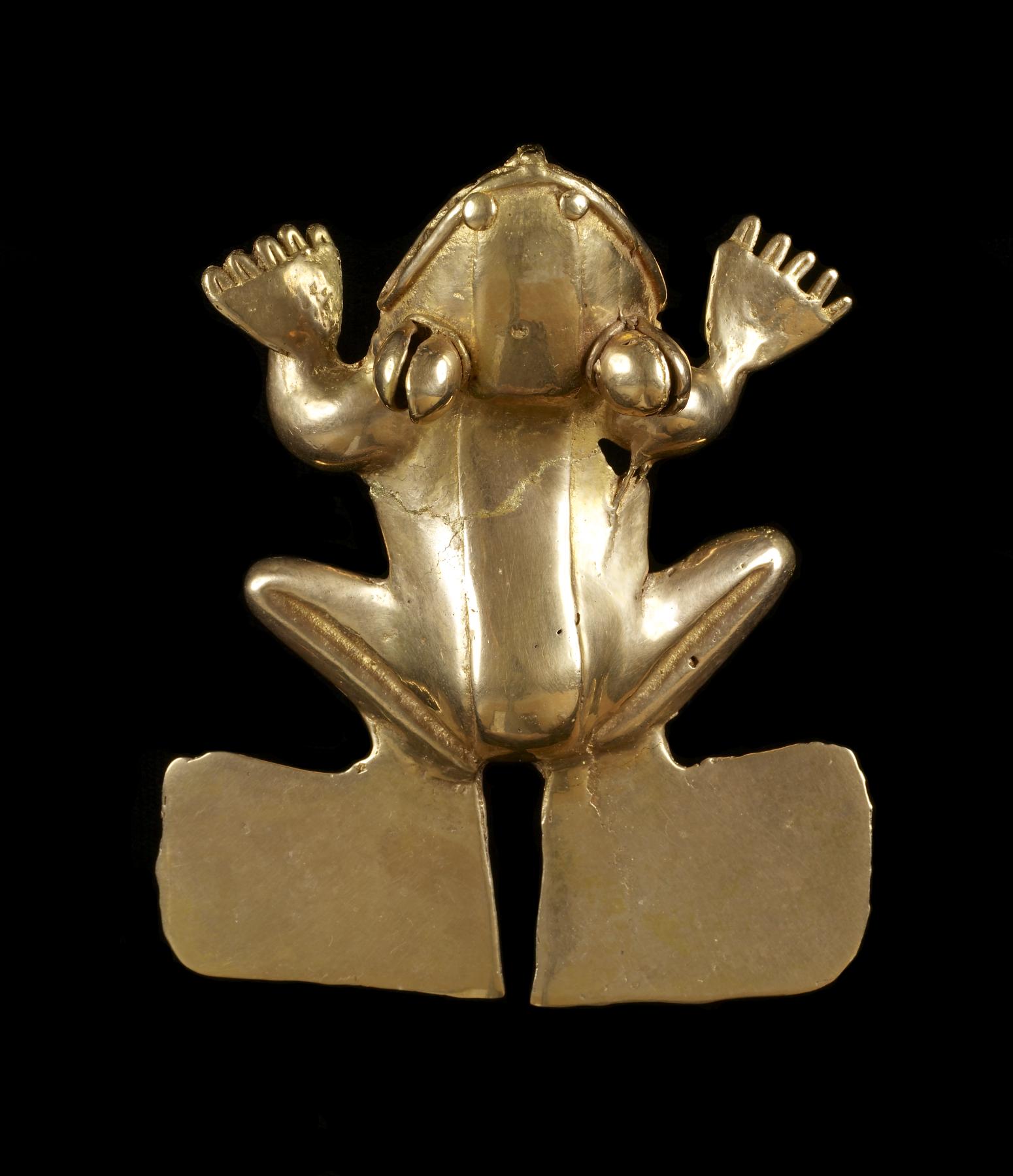Frog Effigy Pendant
(Ancient Americas )
Sometime after 500 CE, gold became the preferred material for fashioning personal adornments, supplanting jadeite and other green stones from which artists had made impressive pendants and necklaces for centuries. The relatively sudden appearance of gold and the specialized knowledge needed to work it imply the introduction of metallurgy from outside the region. All evidence points to northwestern Colombia as the point of origin of the metal arts, a region filled with other archaeological and art historical lines of evidence indicating a long-standing history of contacts between the two regions. Gold pendants were cast in a variety of forms, from relatively naturalistic portrayals of animals to composite creatures combining human and zoomorphic features. The frog may be a totem, symbolic of transformational abilities or special connections to the supernatural.
Provenance
Provenance (from the French provenir, 'to come from/forth') is the chronology of the ownership, custody, or location of a historical object. Learn more about provenance at the Walters.
Throckmorton Fine Art, New York; purchased by John G. Bourne, Sante Fe, 2001; given to John G. Bourne Foundation, 2001 [1]; given to Walters Art Museum, 2013.
[1] according to Bourne Foundation accounts
Exhibitions
| 2015 | Gold of the Ancient Americas. The Walters Art Museum, Baltimore. |
| 2012-2013 | Exploring Art of the Ancient Americas: The John Bourne Collection Gift. The Walters Art Museum, Baltimore; Frist Center for the Visual Arts, Nashville. |
Conservation
| Date | Description | Narrative |
|---|---|---|
| 1/1/2011 | Examination | This frog was cast in a single pour from a tumbaga alloy of gold and copper; the flat feet may have been further thinned and shaped by hammering after casting. Silver in a quantity of 1% was not an intentional addition but more likely present as an impurity in the gold. Pendants from this region were typically surface enriched with gold, but this frog’s copper color may indicate that there was little or no surface enrichment. X-radiography was used to investigate the condition of the frog. A small repair is visible along the mid-section indicating difficulties with the metal flow during casting. The dark spots in the x-ray result from trapped gas bubbles present as the molten metal cooled down. These porosities make the object weak and susceptible to breakage. |
Geographies
Panama (Place of Origin)
Measurements
H: 4 11/16 x W: 3 3/4 x D: 1 3/8 in. (11.9 x 9.6 x 3.5 cm)
Credit Line
Gift of John G. Bourne Foundation, 2013
Location in Museum
Accession Number
In libraries, galleries, museums, and archives, an accession number is a unique identifier assigned to each object in the collection.
In libraries, galleries, museums, and archives, an accession number is a unique identifier assigned to each object in the collection.
2009.20.250


